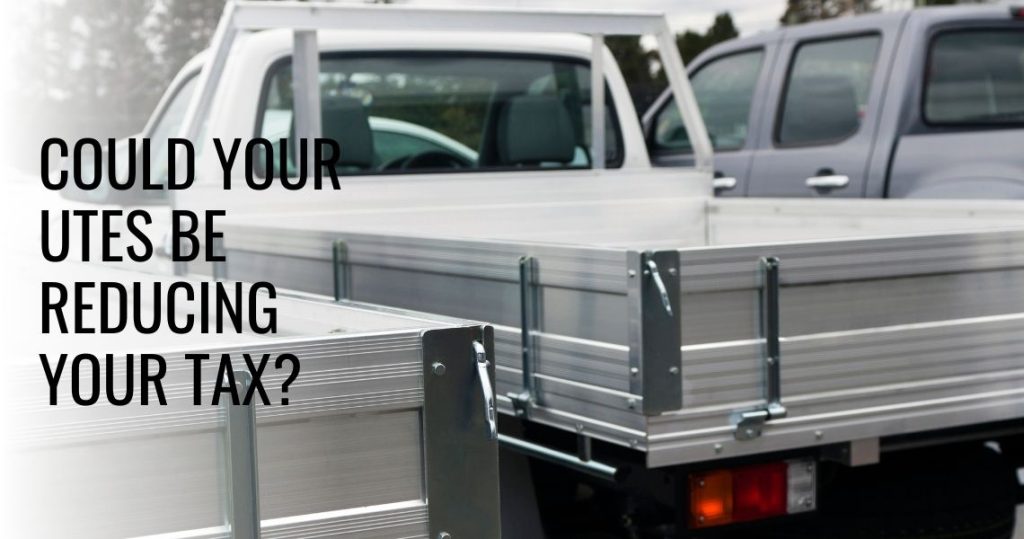
Book a Free Consultation!
✅Builders CFO Program
✅Business Improvement Program
✅Taxation Advice


When it comes to managing your business expenses, even your work vehicles could offer hidden opportunities.
If you operate a business and provide company vehicles like utes, they might be eligible for Fringe Benefits Tax (FBT) exemptions. This could mean real savings for your business, especially if the vehicles are used within the ATO’s guidelines.
Let’s go over how you can assess whether your utes qualify.
A Quick Recap: What Is Fringe Benefits Tax (FBT)?
FBT is a tax employers pay on certain non-salary benefits provided to employees. Company vehicles are one of the most common fringe benefits—and when used privately, they can attract FBT.
However, some industries— including quarries—may be eligible for FBT exemptions, provided specific conditions are met.
5 Steps to Work Out If Your Utes Are FBT Exempt
Here’s a simple five-step process to help you assess if your vehicles qualify for exemption:
Step 1. Is the private use exempt?
Some limited private use is allowed by the ATO, including:
- Travel between home and work
- Travel required for work purposes
- Minor, infrequent personal trips (such as the occasional tip run)
If the vehicle is used for other private purposes—like school drop-offs or regular weekend trips—it likely won’t be exempt
Step 2. Does the vehicle meet the ATO’s eligibility criteria?
To qualify, the vehicle must be:
- A single cab ute, or
- A dual cab ute that meets one of the following:
- Can carry a load of 1 tonne or more
- Can carry more than 8 passengers (including the driver)
- Is not primarily designed to carry passengers
In addition, the vehicle must be valued below the GST-inclusive luxury car tax limit (currently $76,950 as of April 2025). It also shouldn’t be part of a salary packaging or remuneration arrangement.
For dual cab utes, the ATO considers whether the weight carried for goods exceeds 50% of the total payload. If so, it may still qualify as a goods vehicle.
Step 3. Is it genuinely used for work purposes?
Work-related use includes:
- Driving between job sites or to clients
- Transporting bulky equipment or tools
- Use that’s required as part of the employee’s duties
If the vehicle is being used mostly for business, that’s a positive sign—but it must be supported by records.
Step 4. Is private use within the allowed limits?
To remain exempt, the private use of the vehicle must be:
- Limited to travel between home and work
- With small diversions (up to 2km from the usual route)
- No more than 1,000km per year for private purposes
- No single return trip more than 200km
Step 5. Do you have the right documentation?
Record keeping is essential. Make sure you have:
- A valid logbook for each vehicle
- Signed annual declarations from employees
- A vehicle use policy that outlines usage rules clearly
These documents help demonstrate compliance if your business is ever audited.
Real-World Example: XYZ Quarry
We helped XYZ Quarry review their FBT position. Here’s what we did:
| Step | Findings | |||||||||||
| Step 1: Is it used for non-exempt private activities? | Reviewing XYZ’s employee-used utes, private activities fell within exempt private use rules. | |||||||||||
| Step 2: Does it meet the vehicle eligibility criteria? | XYZ’s vehicles in most cases were single cab utes or dual cab utes that met the goods or person-carrying criteria. However, there was a dual cab 2018 Ford Ranger that was used for both people and goods. To determine if it was eligible vehicle, we calculated the below:
The vehicle’s payload: 950kgGVM – Factory unladen mass/kerb weight = payload 3,200kg – 2,250kg = 950 The vehicle’s passenger carrying weight: 340kg68kg x number of seats = passenger carrying weight 68kg x 5 = 340 The remaining payload for carrying goods: 610kgPayload – passenger carrying weight = remaining payload for carrying goods 950 – 340 = 610kg As the remaining payload for goods was more than 50% of the payload, it was deemed eligible. |
|||||||||||
| Step 3: Is it used only for work-related functions? | Reviewing all uses, utes aligned with eligible work-related use.
Vehicles were also used for: Making deliveries and carrying samples to clients Carrying supplies for maintenance works, such as truck spare tyres Carrying out acid-washing requirements Used as re-fuelling vehicles While these aren’t specified by the ATO, we deemed these to be suitable work-related functions. |
|||||||||||
| Step 4: Does private use fall into private-use limits? | Reviewing records in place, we were able to determine the vehicle was used within private use limits. | |||||||||||
| Step 5: Do you have the right records in place? | While XYZ had a policy in place, it didn’t clearly outline private use limits to employees.
To ensure XYZ could continue to apply for an exemption, it was recommended that a Weekly Light Vehicle Checklist be updated to be compliant with Fringe Benefits Tax (FBT) rules and employees signed off on these defined limits. It was also recommended that annual FBT declarations were completed each year and valid logbooks be kept. |
|||||||||||
This saved the business time, money, and potential issues with compliance.
Final Reminder
FBT rules can change from year to year, so it’s important to review your vehicles regularly—especially in industries like quarrying, where utes are commonly used but also closely monitored for compliance.
If you’re unsure whether your business vehicles qualify for exemption, it’s best to speak with your accountant or advisor shortly after 31 March—well before your FBT return is due.





Send To Someone